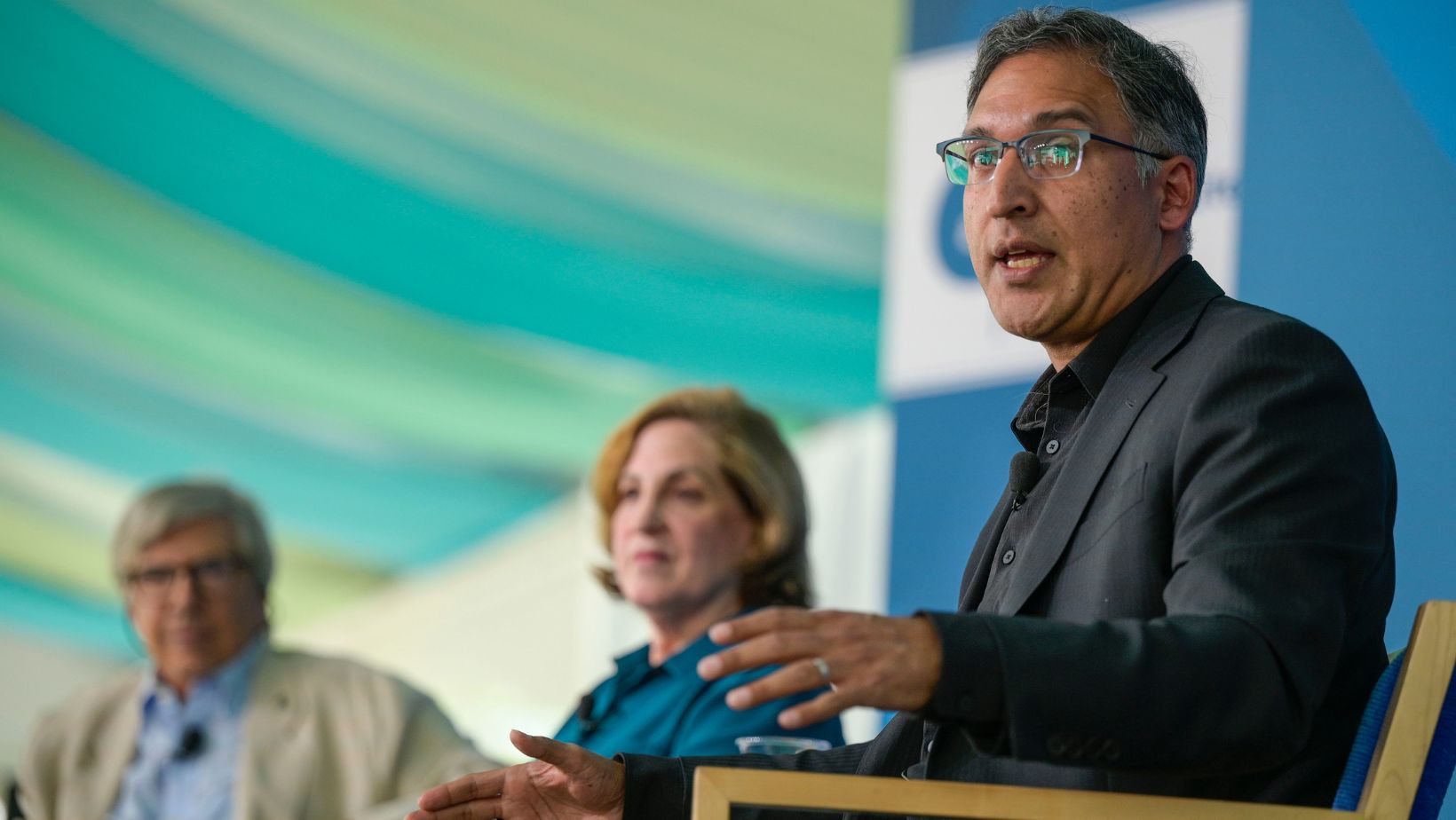Above, Aspen Institute Justice & Society Program Executive Director Meryl Justin Chertoff provides a legal and historical perspective on countries welcoming refugees and recommendations on countering the goals of ISIS.
ISIS’s slaughter in the streets of Paris is further proof that its grievances are not only with particular categories of people, be they journalists, Jews, or Yazidis, but with modern civilization and culture as well. As Graeme Wood pointed out in an excellent piece in The Atlantic, ISIS is not only anti-Western, but anti-modern. Last week illustrated this: attacks occurred in Paris, Beirut, and Baghdad, and ISIS is as interested in the sidewalk cafes beloved throughout the Middle East as it is in European rock concerts.
A recent Washington Post op-ed by Harleen Gambhir pointed out that one goal of ISIS is to reduce what it calls the “grayzone,” forcing European Muslims to choose between what they term “apostasy” and “enlistment” in the ISIS cause. It is in the grayzone that pluralistic societies predicated on religious freedom and non-establishment function. Grayzones are where girls who wear hijabs and boys who wear skullcaps are treated with dignity on public transportation; where both sexes attend school, go to the cinema, and participate in sports; and where your religious faith does not impair your degree of participation in the privileges of citizenship. ISIS hopes its recent attacks will elicit an anti-Muslim backlash, alienating both recent arrivals and second- and third-generation European Muslims, sending new recruits into their waiting arms. Elimination of the grayzone is polarization on steroids, and undermines a cherished core value shared by the US and most of Europe.
ISIS is recruiting globally to fight its war. So must we. But our army cannot be composed only of hard-power warriors. As Maajid Nawaz noted last week, we cannot shoot our way out of the ISIS problem. For some time, there has been discussion of a strategy called countering violent extremism (CVE) in the US, and PREVENT in the UK. These efforts, while well-intentioned, have been fundamentally flawed, because they are driven by government, and there is a high level of mistrust for government-led work in this field.
Minority religious communities have bridled at being asked to turn over malfeasants in their own communities for fear of infiltration of their religious institutions, as well as unwelcome attention from law enforcement. Missteps by law enforcement have reinforced the perception that it is a mistake to cooperate with government-led efforts. The answer is not simple. Government has stepped into this realm because (a) it is interested in preventing terrorist acts, and (b) nobody else has stepped up to the plate.
As we finally wake up to the recognition that this is going to be a long slog, it is time for others to do just that: take on the mantle of CVE, but do it in the way it needs to be done. This means that families, community and youth service leaders, imams, and teachers all need to engage with disaffected youth both here and in Europe. Major foundations, in keeping with their recently announced commitment to “big bets,” need to make constructive engagement of religious pluralism a major commitment. Best practice models exist throughout the US and Europe. They need to be scaled up. Often the most successful work is done in local communities. Some is centered on religious literacy; much focuses on bringing together people from different faith backgrounds in efforts for the common good, creating environments where we see past the category of “other” and understand the common needs and aspirations of our neighbors.
In our own studies of the Boys and Girls Clubs, the YMCA of the USA, and evangelical college students in the Midwest, we learned that knowing the values and cultures of emergent communities significantly reduces bias. It also creates the personal relationships that are priceless in times of crisis. This does not mean that law enforcement isn’t needed for counterterrorism; it simply isn’t terribly good at engaging with minority religious communities. Until it learns how better to do so, law enforcement should stick to hunting bad guys through proven investigative techniques.
In early 2015, the White House held a conference on CVE; little discernable action followed. Next month in the UK, the Woolf Institute will issue a report on Religion and Belief in British Public Life. Hopefully civil society organizations and the government there will be swifter to act on the recommendations for fostering inclusiveness, and pushing back on hatred.
Any strategy will need to include more than simply countering the ISIS narrative. It must also address education, job training, and opportunities for young people who are isolated and marginalized so that they fully embrace citizenship’s privileges and obligations, be it American, British, or French. We cannot expect to have 100 percent success in such an effort. But reducing the pool of those susceptible to the siren call of extremist recruitment will be a huge achievement, and a necessary one.
Meryl Justin Chertoff is executive director of the Justice & Society Program and the Inclusive America Project at the Aspen Institute.

